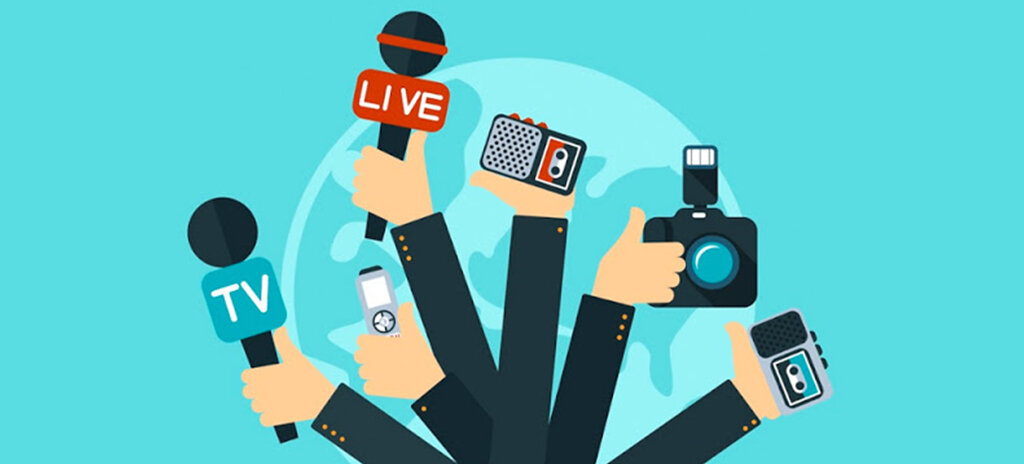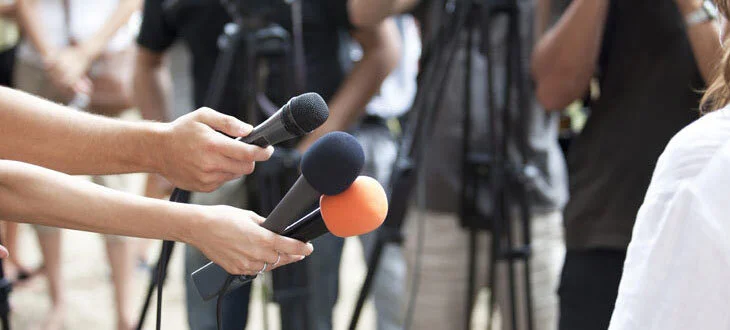Media TIPS
below are Tips for liaising with the media & for doing media interviews and tips about recording footage during protests for videos & social media afterward
What is the media?
Separate from social media, we have journalists, editors and broadcasters that serve the community by reporting on important information, events and other matters that concern politics, the economy, weather, human rights, social matters and much, much more. We have international media companies along with national, state and local/community level ones. There are newspapers (yes, still!), magazines, blogs, and, of course, radio stations and television channels and the companies that own them. All of these forms of media are worth considering.
Interview Tips
Whether we like it or not, the general public want to see clean-cut, well-mannered and articulate people on their news segments, and media companies know this. If you/your group need to liaise with journalists and/or you or someone in your group will need to do an interview, there are some considerations to make and some general rules that will help make your interview successful.
Dress professionally when on camera or meeting a journalist.
Be clean in appearance, making sure hair is not too ‘free’ that day.
Remove excessive piercings and cover as many tattoos as possible.
Speak slightly slower than you normally would, making sure to pronounce words clearly.
Do not use words or terms that you do not understand, or that are not common in society.
Keep it professional, but also natural.
Always ask journalists for a set list of questions that they will be asking. This is your right.
Once you have the list of questions, answer them (write them down) so that you can practice your interview beforehand, numerous times.
Make sure to use consistent messaging and to convey your key points and information.
Remember to breathe! If you are doing a live interview, breathe in through your nose and out through your mouth to steady your heartbeat and calm your nerves.
Contacting the media
Contacting the media is very effective when you have important information that you want to spread rapidly or when you need to get exposure quickly, or if you need to get some public pressure on a business or individual.
It is easy to contact multiple media agencies, journalists and other media sources in a short amount of time using social media, #hashtags, by ”tagging” them in posts and by sending them emails and messages.
You can easily find email addresses for writers and editors by searching online or by calling and asking.
Keep a media contact list to reference when needed. This will need to be updated regularly as editors and journalists/writers may often switch employers.
For formal communication, like a media/press release, you would usually email these to media companies. You can opt to also send them through snail-mail, but you need to ensure plenty of time for your letters to arrive, and you still need to send emails closer to the date of your event, or a suitable date relevant to the information included in your media/press release.
Be cautious when divulging information with the media. It is not wise to share information with them that you do not want to be shared publicly. However, they do operate within rules and codes. If you are clear that certain information is not to be used, and you do this in writing, they should be bound to honor that request.
You can look up media/reporting/journalistic codes, guidelines and other relevant policies online.
other tips
Do not be intimidated by their professional position. The media is there for us to use to our benefit. When they won't, we can do it ourselves with the help of our communities and networks of support through social media, blog posts, open forums, email campaigns and in other ways.
Remember to stick to the facts from your research and work as a group to contact as many media sources as possible. Resend messages if you do not get prompt responses.
Check online for other tips (there are plenty). We have provided some links to further information below:
Learn from the journalists point-of-view
Recording videos During protests, rallies and other events
When you want to record video during a protest, there are a few things to remember to simplify the process and to help you get the most usable footage out of your recordings.
1) Livestreams produce poor quality videos (audio + visual) and are not usually editable. It is best to record video footage, not livestream. If you do want to livestream from your location, make sure to have another person/device recording raw footage.
2) Recording from your phone is convenient, but will produce lower quality videos. Once you upload videos to social media platforms, the quality of your video is undermined. Capturing high resolution recordings is ideal. It is best to use a GoPro, a high resolution camera or another high res recording device.
3) Recording raw footage also allows you to manipulate/edit the footage afterward so you can make shorter clips and promotional videos etc.
4) Be sure you have a wireless charger for your devices.
5) Designating someone to record footage is advisable. This is separate from a Legal Observer and their role of recording interactions between police and protestors (and counter-protestors etc.). Click here to learn more about the Legal Observer role and other very important roles for protestors/affinity group members.


